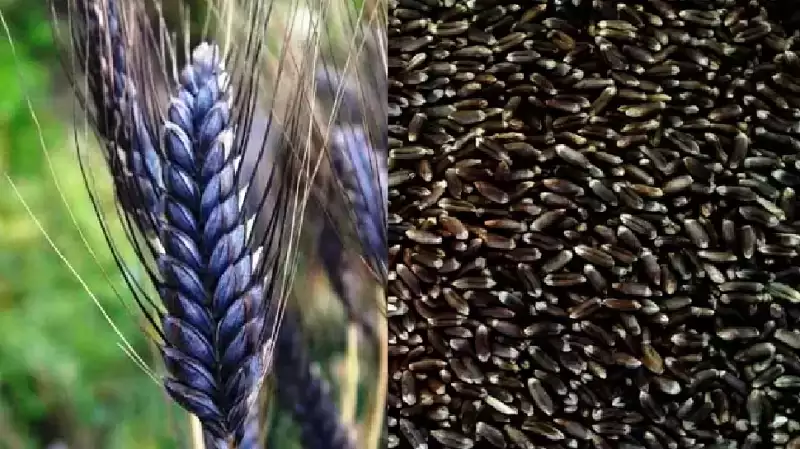The glycemic index (GI) is a ranking system that measures how carbohydrates in food affect blood sugar levels. It assigns a numerical value to carbohydrate-containing foods based on how quickly they raise blood sugar levels after consumption compared to pure glucose, which has a GI of 100.
Foods with a low GI (55 or less) cause a slower and more gradual rise in blood sugar levels, while foods with a high GI (70 or higher) cause a more rapid rise in blood sugar levels. . Foods with medium GI fall between these categories.
The GI of a food is affected by various factors such as the type of carbohydrate, the amount of fiber and fat in the food, processing methods, cooking time and the physical structure of the food.
Low-GI foods are often recommended for individuals wishing to manage blood sugar levels, especially those with diabetes, as they help provide more stable energy and help control blood sugar levels. Can help. Low GI foods typically include whole grains, legumes, non-starchy vegetables, fruits, and some dairy products.
It is important to note that although GI is a useful tool, it is not the only factor to consider when making dietary choices. Overall nutritional content, portion sizes, and personal health goals should also be taken into account. Combining low GI foods with a balanced diet rich in nutrients is essential for overall health and well-being.
Quick overview of what’s high and low In Glycemic Index
Definitely! Here’s a quick overview of foods classified as high, medium and low on the glycemic index (GI):
High Glycemic Index (GI 70 or above):
- White bread
- White rice
- White potatoes
- Sugary cereals
- Sodas and sugary drinks
- Instant oatmeal
- Cornflakes
- Pineapple
Medium Glycemic Index (GI 56-69):
- Whole wheat products (bread, pasta)
- Basmati rice
- Sweet potatoes
- Couscous
- Oat bran
- Raisins
- Bananas
Low Glycemic Index (GI 55 or below):
- Legumes (beans, lentils, chickpeas)
- Whole grains (quinoa, barley, bulgur)
- Non-starchy vegetables (broccoli, cauliflower, leafy greens)
- Nuts and seeds
- Berries (strawberries, blueberries, raspberries)
- Dairy products (plain yogurt, milk)
- Most fruits (apples, oranges, cherries, grapefruit)
Choosing foods with low or medium GI can help manage blood sugar levels by providing more sustained energy than high GI foods and preventing rapid spikes in blood glucose. Including a variety of low-GI foods in your diet, especially those rich in fiber and nutrients, is beneficial for overall health and may aid in better blood sugar control.
Chat Now Gehuwala- Click Here
Glycemic index FAQ
1. What is the Glycemic Index (GI)?
Answer: The glycemic index is a ranking system that measures how carbohydrates in food affect blood sugar levels. It ranks foods based on how quickly they raise blood glucose levels compared to pure glucose, which has a GI of 100.
2. How is GI measured or calculated?
Answer: GI is determined through human tests, where participants consume a portion of a test food containing a specific amount of carbohydrate, and their blood sugar response is compared to their response after consuming a standard glucose solution. It is done from. The area under the blood glucose response curve for the tested food is compared to glucose to calculate its GI.
3. What foods have a high GI?
Answer: Foods with a high GI (usually 70 or higher) include white bread, white rice, sugary cereals, potatoes and some processed foods with added sugars.
4. What foods have a low GI?
Answer: Foods with a low GI (usually 55 or less) include most fruits, vegetables, whole grains like quinoa and barley, legumes (beans, lentils), nuts and seeds.
5. Why is GI important?
Answer: Understanding GI can be helpful in managing blood sugar levels, especially for people with diabetes. Low GI foods may increase blood sugar levels more slowly, providing more sustained energy and potentially aiding better blood sugar control.
6. Are all low-GI foods healthy?
Answer: While low GI foods are generally better at controlling blood sugar, not all low GI foods are equally nutritious. It is essential to consider the overall nutritional content, portion sizes and balance in the diet.
7. Can GI values vary for the same food?
Answer: Yes, GI values may vary due to factors like maturity, cooking methods, processing and even combination of foods. Therefore, exact GI values may vary in different studies.
8. Should I only eat low-GI foods?
Answer: A healthy diet includes a variety of foods. While choosing low-GI foods can be beneficial for blood sugar management, it is essential to focus on a balanced diet that includes a variety of nutrients from different food groups.
9. Where can I find GI values for foods?
Answer: GI databases and charts are available online or in nutrition resources. These provide information about the GI values of different foods, but it is important to use them as a general guide rather than the sole basis for meal planning.
Understanding the Glycemic Index can be helpful for making informed dietary choices, especially for individuals concerned about blood sugar control, but it’s crucial to consider overall nutritional balance in the diet.




